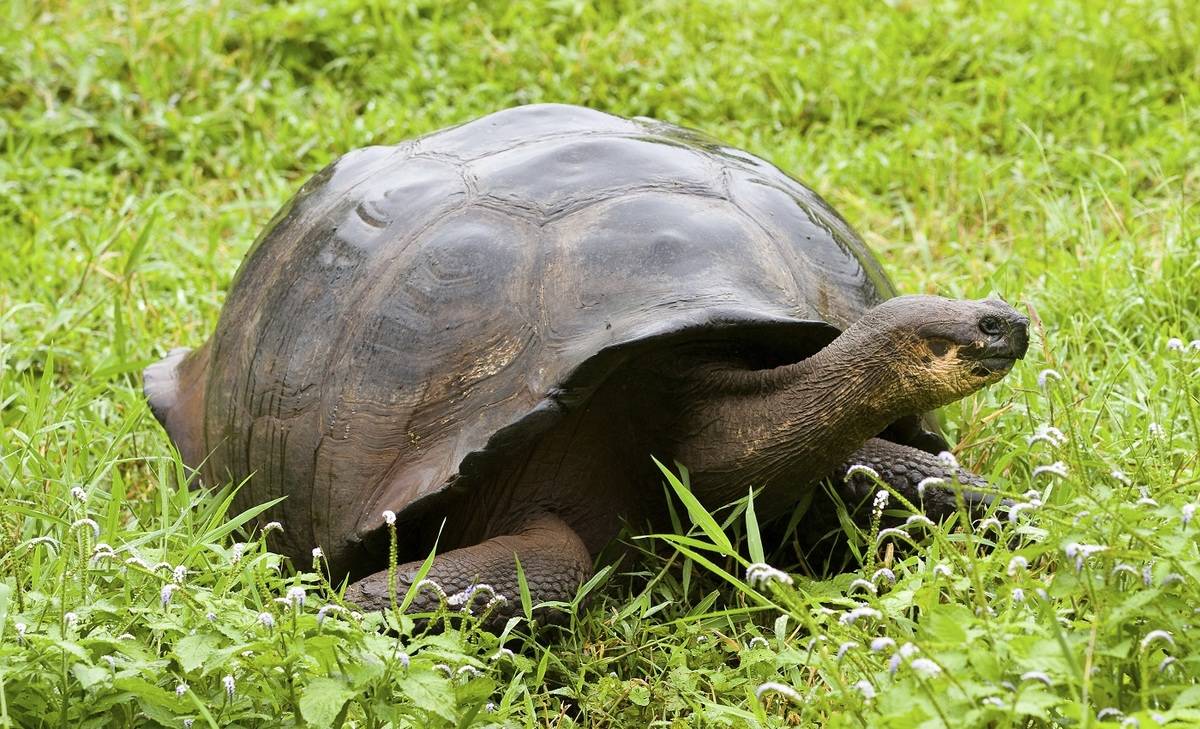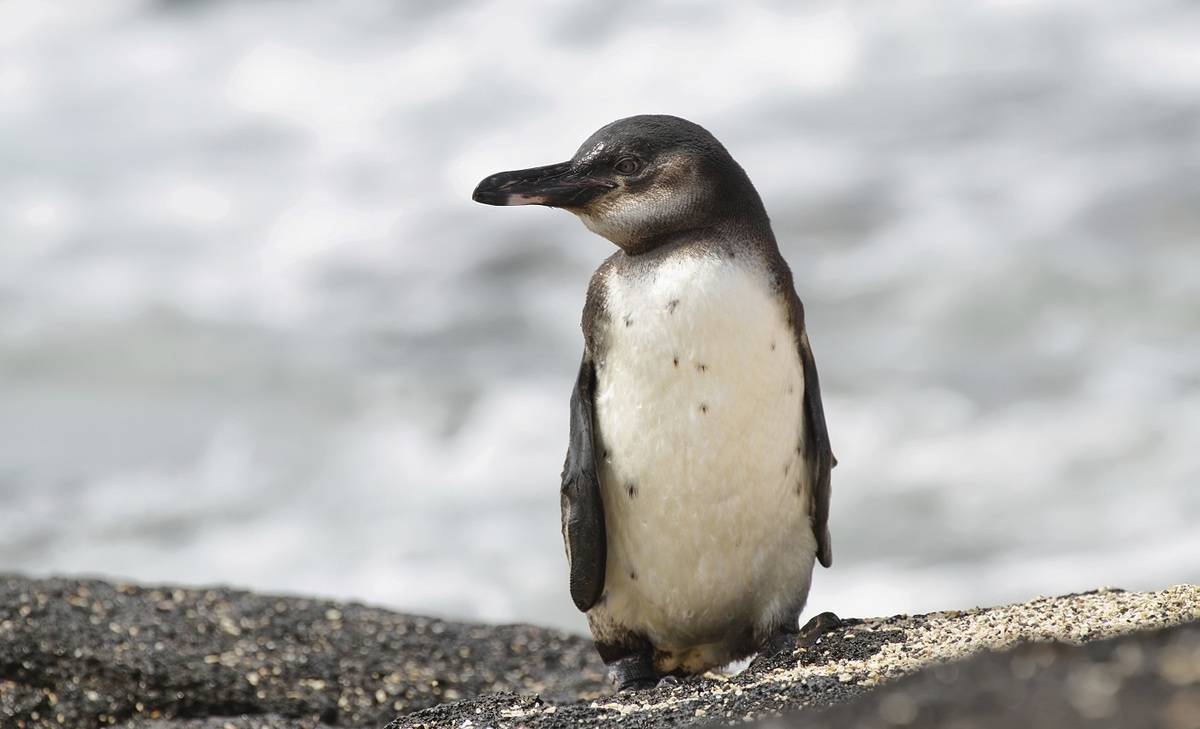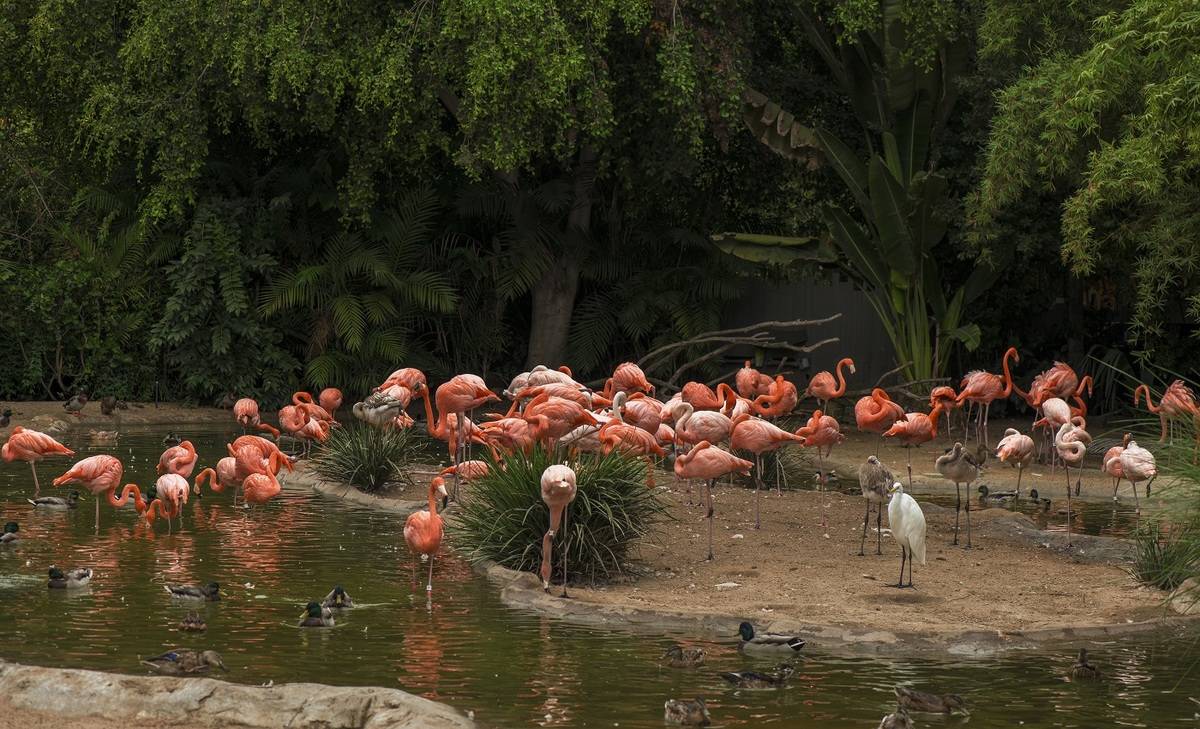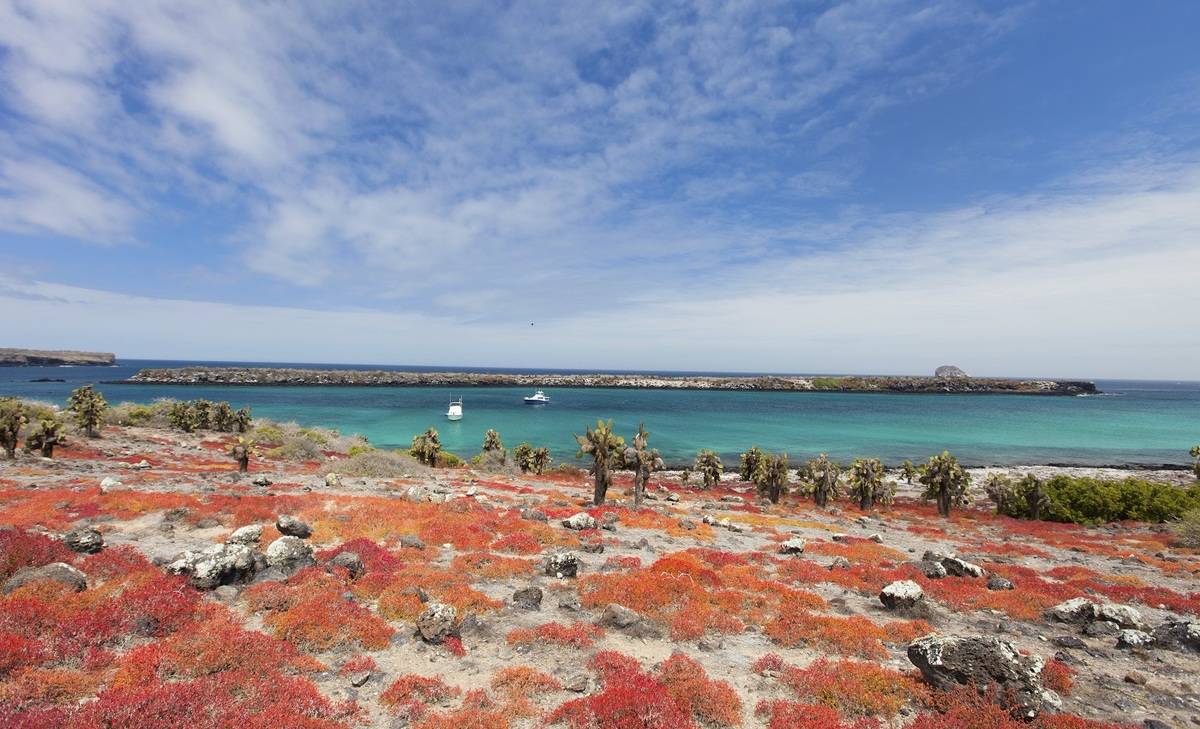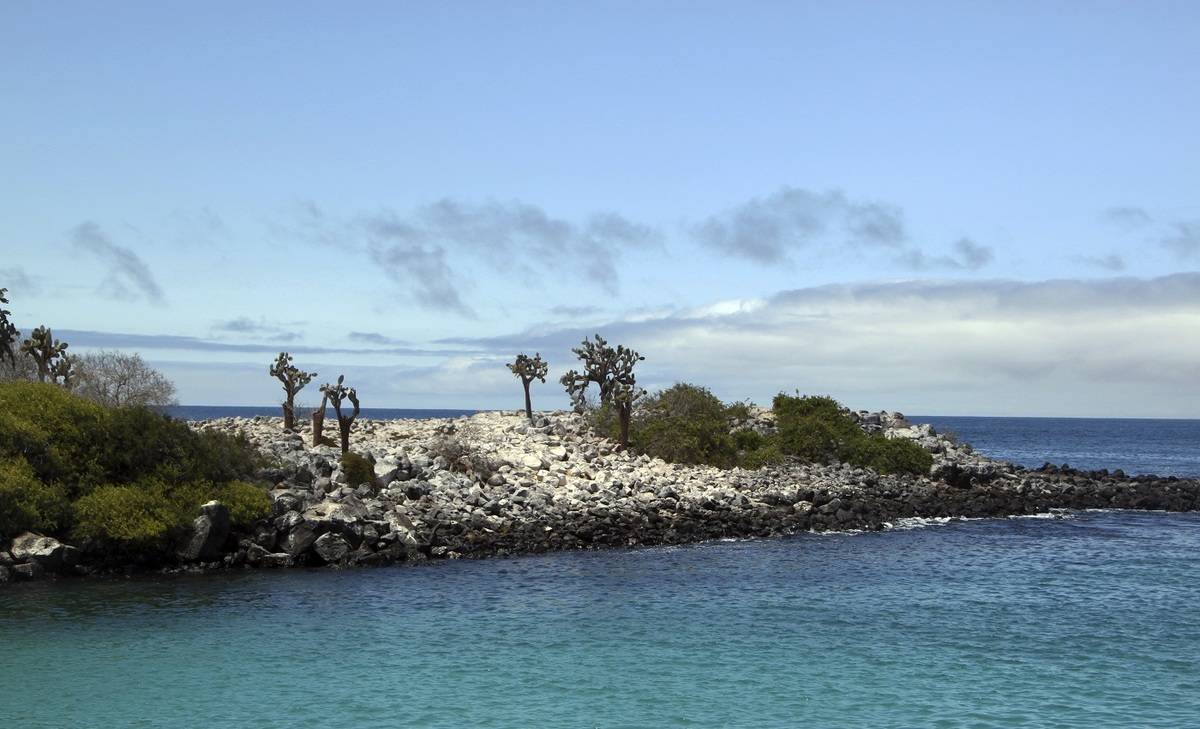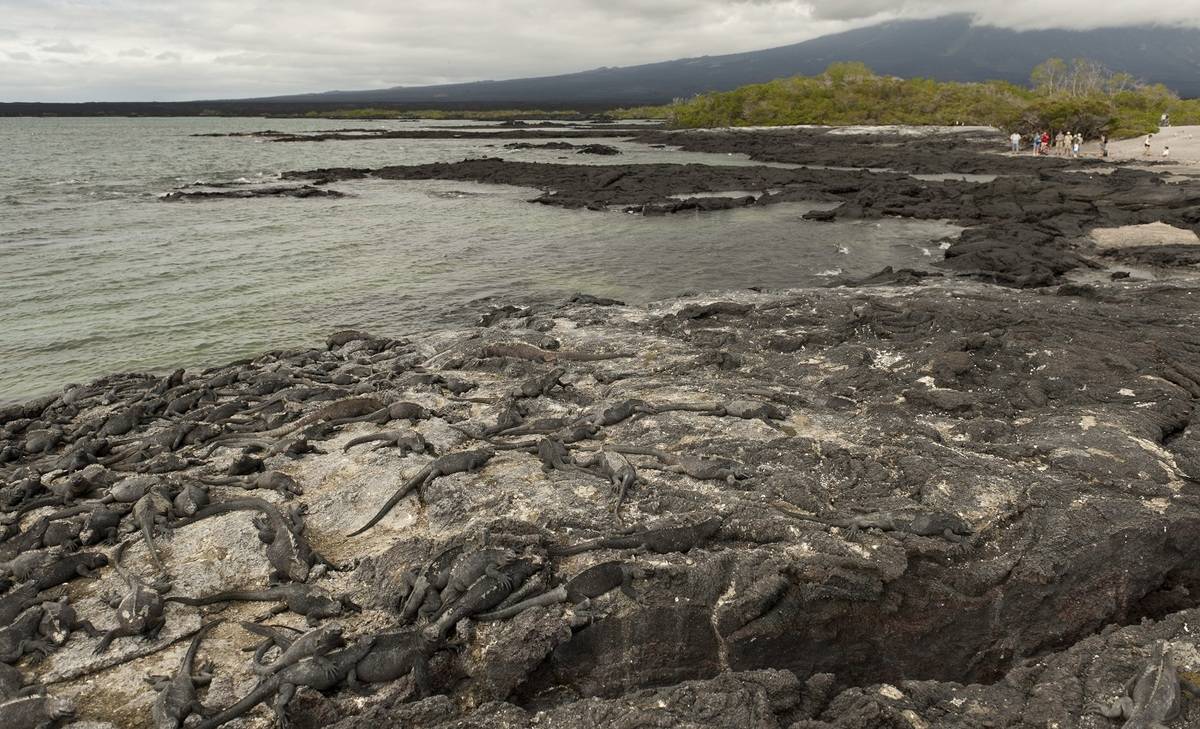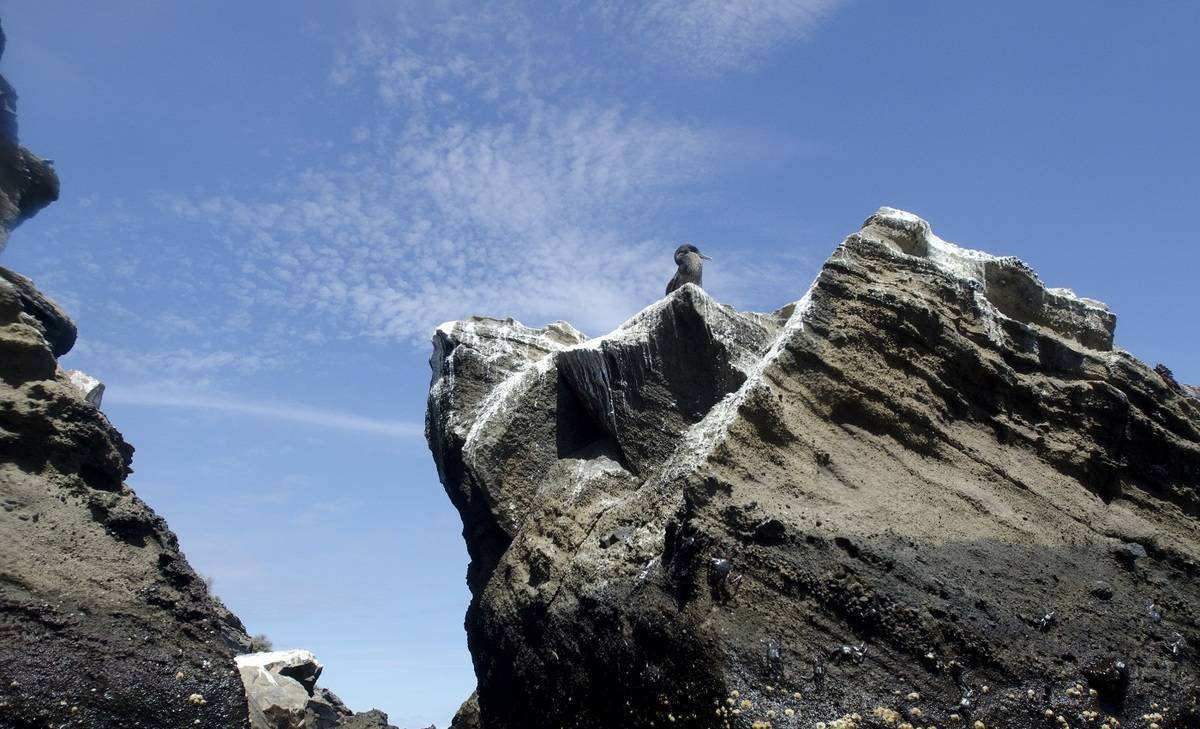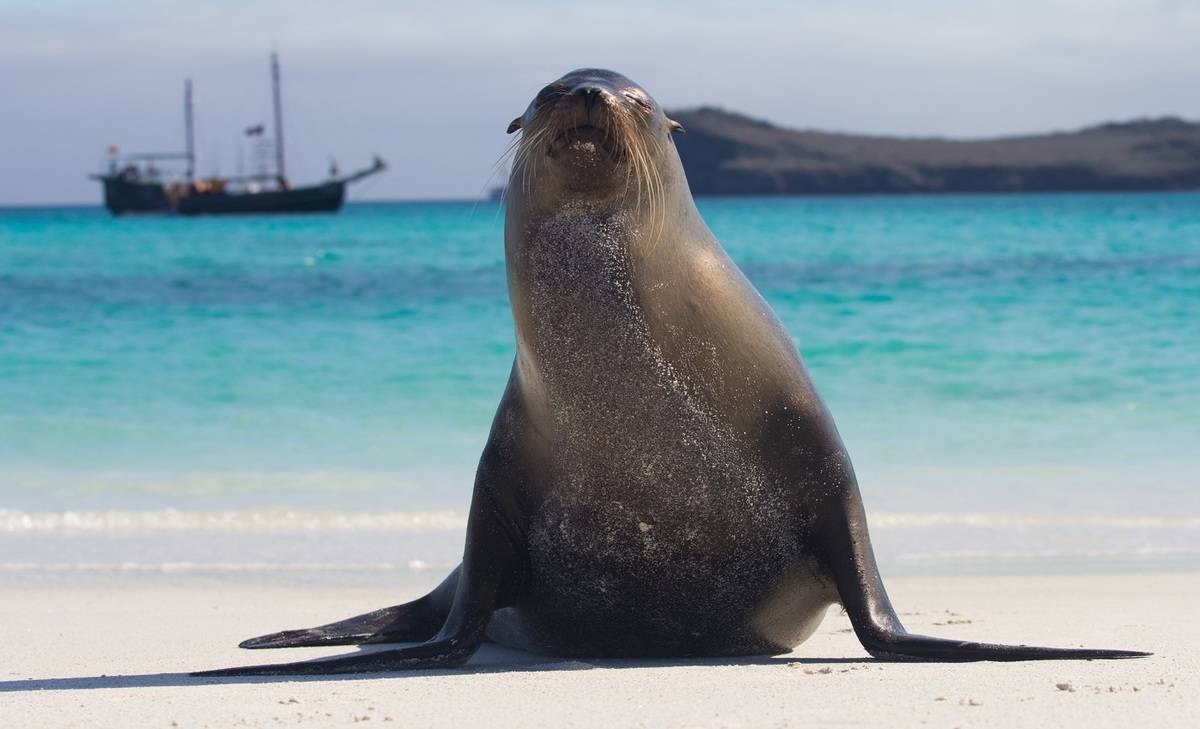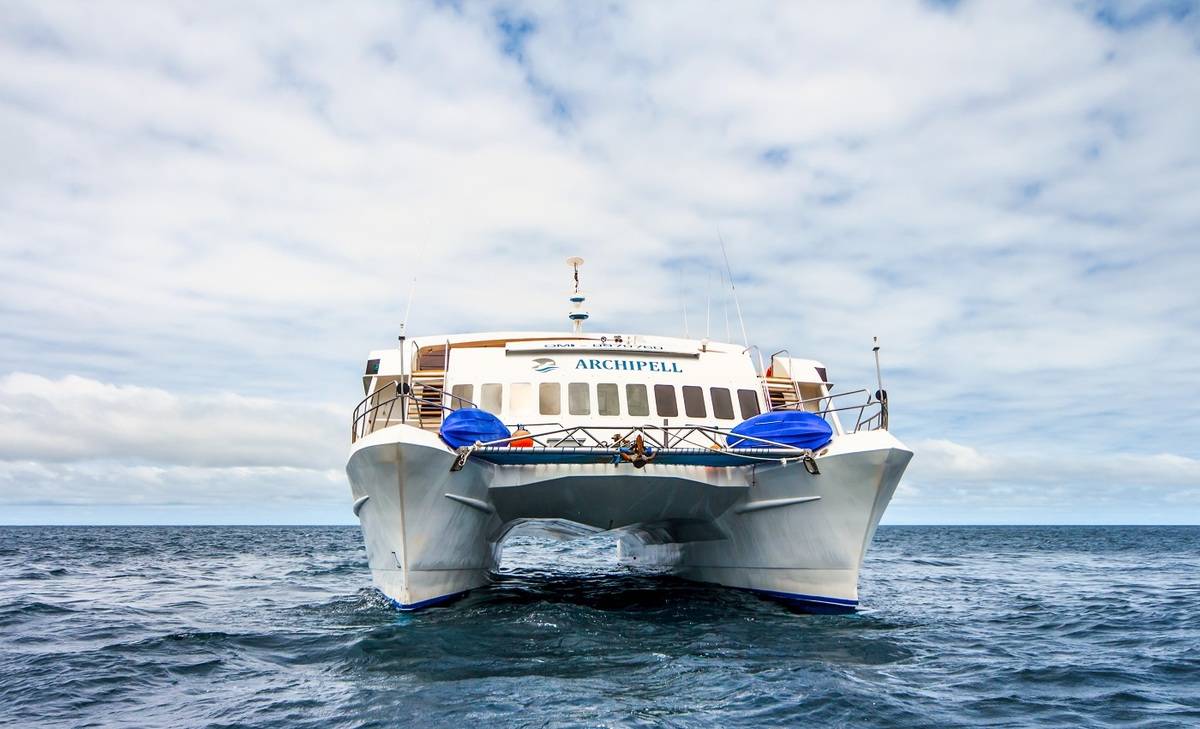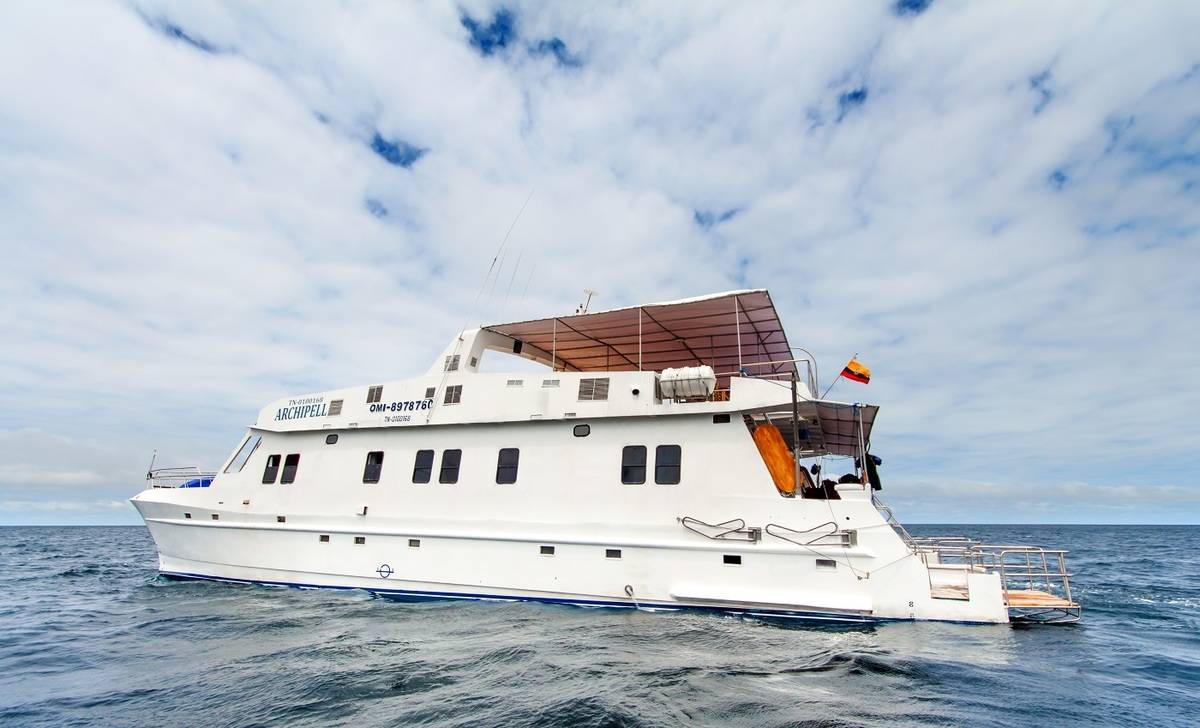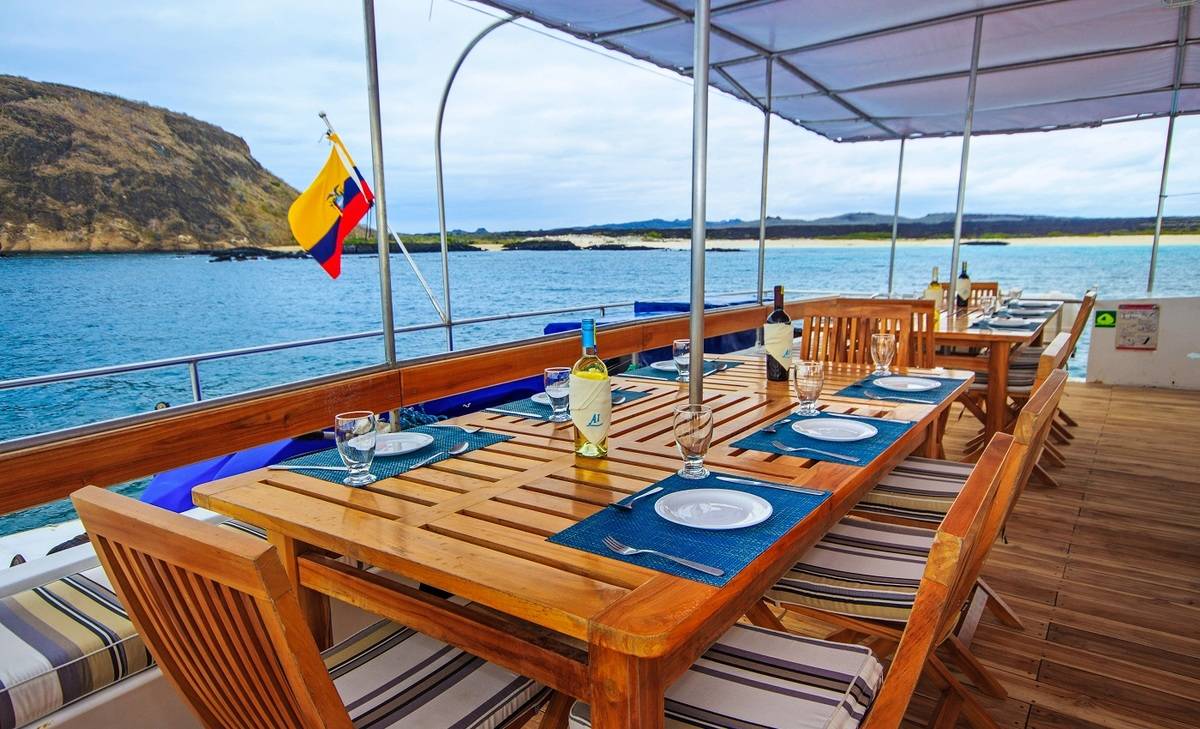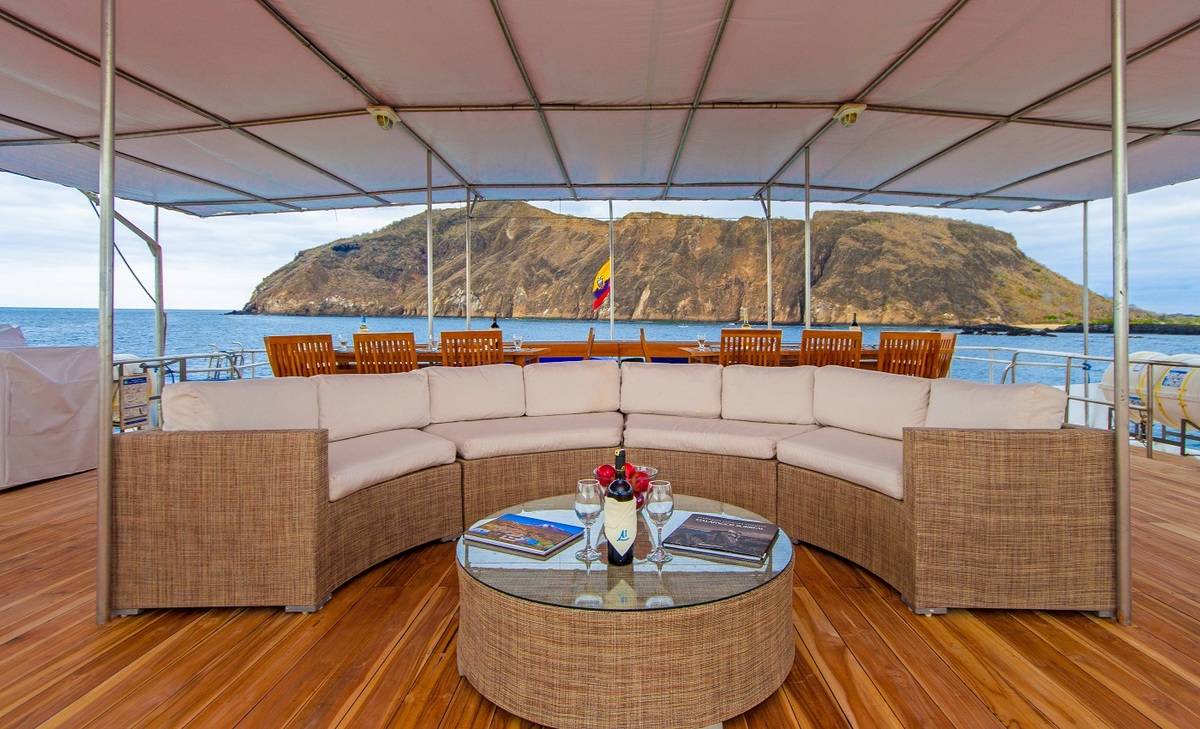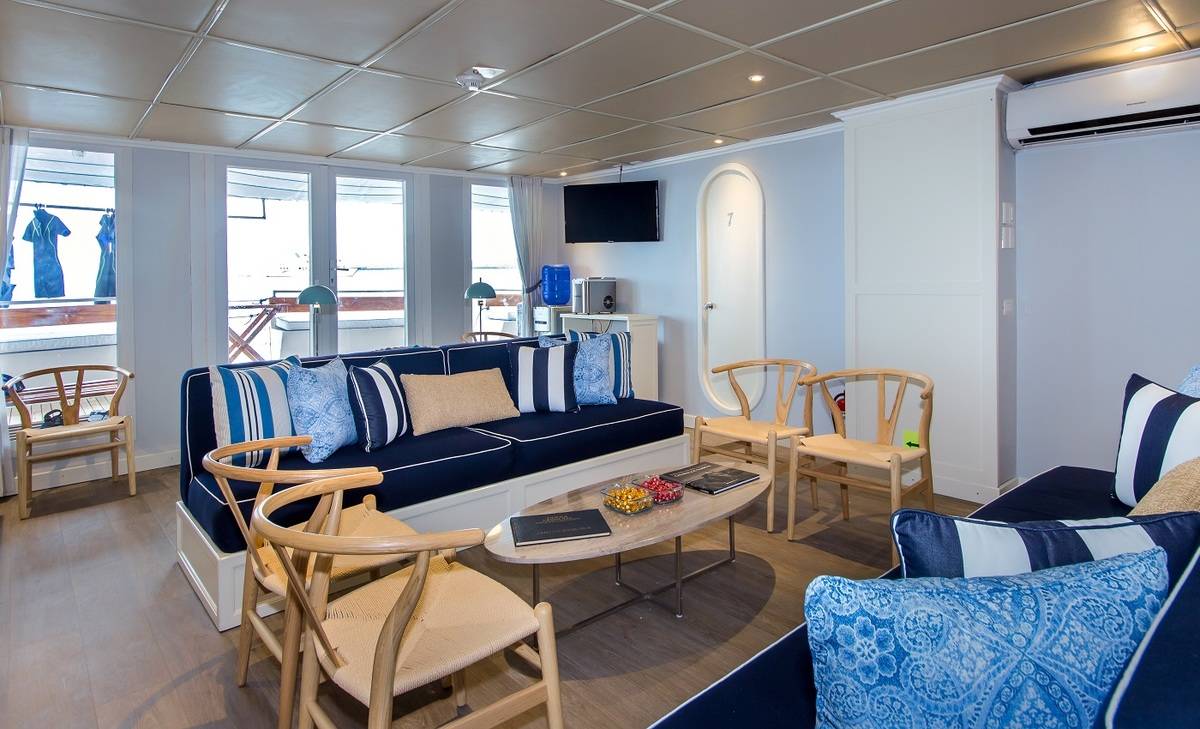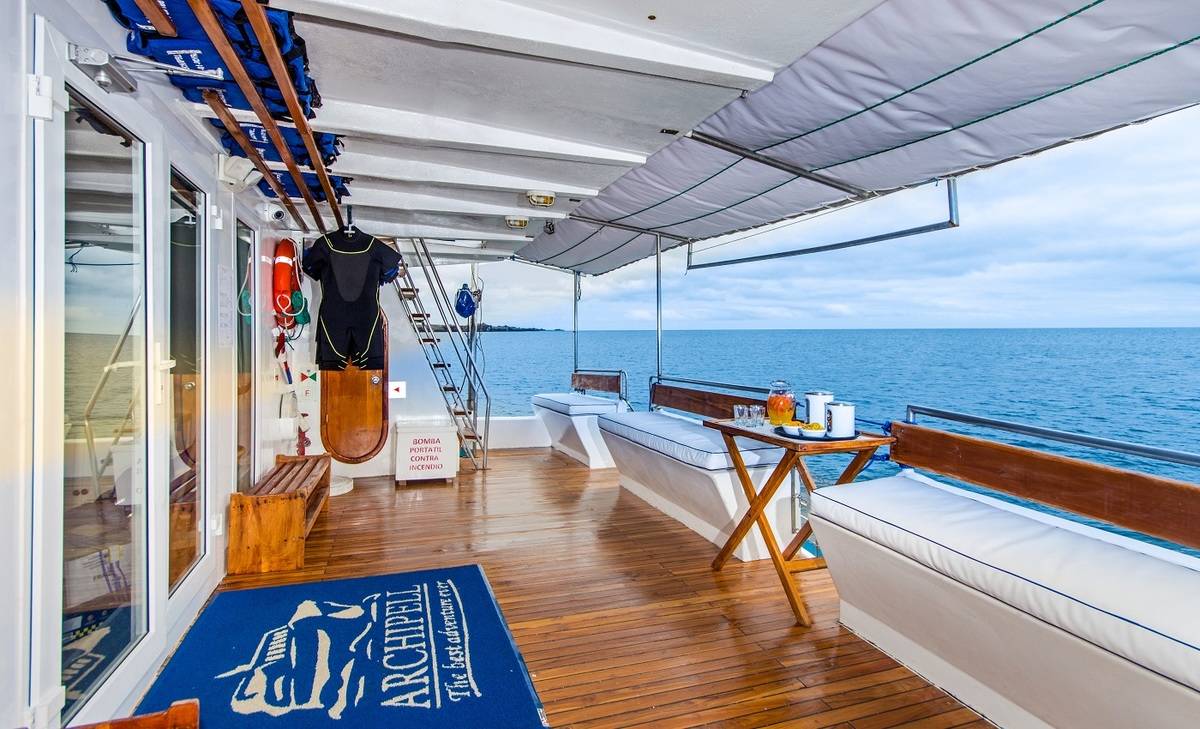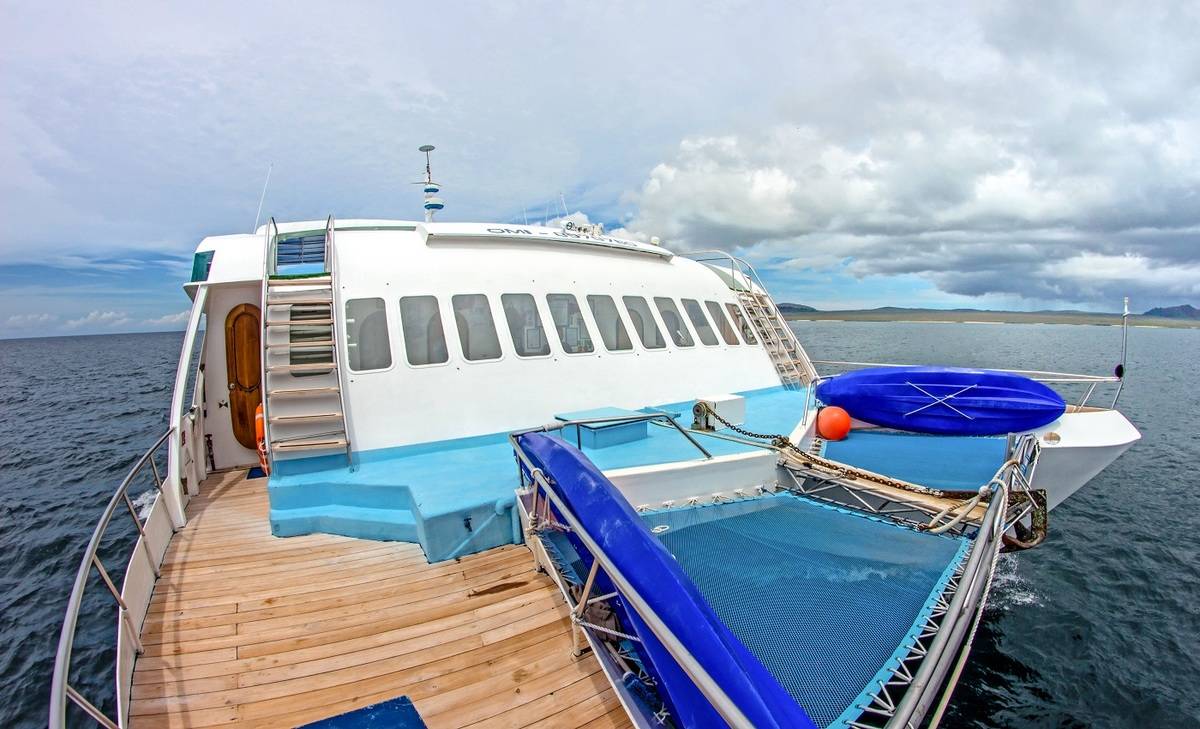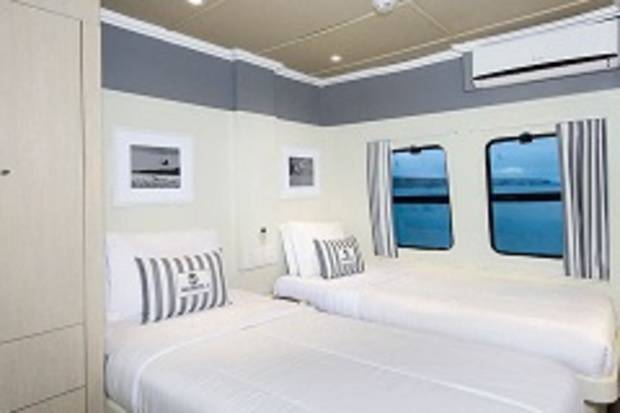South & West Galapagos Islands
8 Days - Archipell I
The Archipell I provides a great space and comfort for a relaxing cruise in the Galapagos Islands. The Archipell I is a luxury catamaran designed to offer superior sailing experience in the Galapagos Islands. Both the Archipell I & II caters to a maximum of 16 passengers. All cabins count on fantastic exterior views with private bathrooms, hot water, and air conditioning. This 8 days cruise offers a wonderful opportunities to discover the amazing land of the Galapagos Southern & Western Islands.

Home » 8 Day Archipell I: South & West Galapagos Islands
Itinerary Highlights
- Discover the amazing and emblematic Giant Galapagos Tortoises
- Spot bottlenose dolphins as you sail towards Champion Islet
- Visit the Asylum of Peace
- Swim with the sea turtles and sea lions!
Itinerary in Brief
- Day 1: Arrive San Cristobal Airport - Colorado Hill
- Day 2: South Plaza & Santa Fe
- Day 3: Champion Islet, Loberia & Asylum of Peace, Floreana Island
- Day 4: Charles Darwin Station - Santa Cruz Highland
- Day 5: Tintoreras Islet - Tortoise Breeding Centre - Wetland
- Day 6: Moreno Point & Elizabeth Bay, Isabela Island
- Day 7: Tagus Cove, Isabela - Espinoza Point, Fernandina
- Day 8: Bachas Beach - Depart Baltra Island
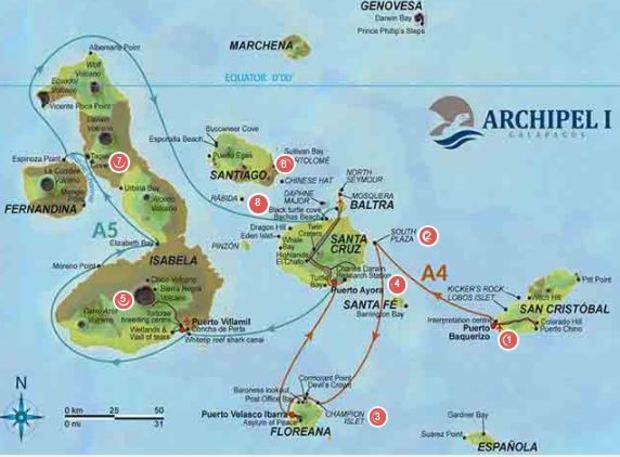
Day 1: San Cristobal Airport - Colorado Hill
Upon arrival to San Cristobal Airport, our representative guide will meet you, help you collect your luggage, and escort you on a short bus ride to the harbour.
Cerro Colorado Tortoises Protection and Growing Centre, located approximately 40 minutes by bus from the southeast of the island, was built to improve the status of the population of the island tortoises. The centre includes a large corral, a Visitor Centre, breeding centre and an interpretative trail. Along this trail, it is possible to see different species of native and endemic plants as well as birds like the San Cristóbal mockingbird, yellow warblers, many species of finches and the Galapagos flycatcher
Day 2: South Plaza & Santa Fe
After breakfast you will enjoy an unforgettable guided walk on South Plaza, the best place to encounter endemic Galapagos land iguanas, patient and photogenic models. You can also look out for some of the unique hybrids between the male marine iguana and female land iguana. Arriving at the upper rim, about 20m/75ft downwards impressively droning waves splash against the foot of soaring cliffs. Clouds of petrels, storm petrels, shearwaters and brown noddies make spectacular flights and sometimes look like they’re walking on the waves. Take your binoculars and don’t miss the red-billed tropicbird with its graceful long tail and spectacular mating fights. These cliffs are also a nesting place for the endemic swallow-tailed gull.
After lunch you will land right in the middle of a Galapagos sea lion colony on the beach, where you will have time for a refreshing swim or excellent snorkelling among tropical reef fish in the crystal-clear azure waters of Barrington Bay. You will also encounter bizarre giant prickly pear cactus (opuntia) forests. These are the largest cacti on the islands, with extremely thick trunks, and can grow over 10m/33ft tall! At the end of the morning we have a wet landing at the beach of Santa Fe where we have a guided nature walk. This extraordinary island is a remnant of probably the most ancient volcano on the Galapagos. Your guide will decide whether the easy shorter circuit is followed, or a strenuous longer hike land inward (moderate level; about 3km/2mi).
Day 3: Champion Islet, Loberia & Asylum of Peace, Floreana Island
Bottlenose dolphins frequently escort our passage to Champion Islet and you can see them from nearby jumping the wakes! Underwater, Galapagos sea lions are playful acrobats that become the number one attraction. There are also lots of reef fish, and perhaps a green Pacific turtle. An inflatable dinghy ride along the shoreline of this islet offers sightings of lots of sea birds that are endemic to the archipelago, including Galapagos penguins, blue-footed boobies, magnificent frigate birds and red-billed tropicbirds, swallow-tailed gulls and lava herons.
The Asylum of Peace Island is of historical interest for guests. This hike goes past a mesmerising cave and visits a fascinating freshwater spring. La Loberia beach gets its name from the huge amount of sea lions that populate the island and rest on the sand. It’s an ideal spot to relax by the ocean, go snorkelling as well as enjoy the sea lions that live there.
Day 4: Charles Darwin Station - Santa Cruz Highlands
Our dinghies will bring you to the touristic pier of Puerto Ayora, from where you will be brought to the Charles Darwin Research Station. This is where biological research and indispensable conservation management of this unique archipelago are carried out. The complex houses interpretation and information centres about the National Park and the Galapagos Marine Reserve. The most memorable part of your visit will probably be the successful breeding centre and the enclosures with Galapagos giant tortoises. Afterwards, you will have some free time to stroll around.
Because wild Galapagos giant tortoises don’t stop at official National Park boundaries, dozens of them also roam on the adjacent woodlands in the populated agricultural zone of Santa Cruz. Thanks to their concentration around their favourite muddy pools, these semi-open pastures and moist scalesia-woodlands are the best place for a quick visit.
Day 5: Tintoreras Islet - Tortoise Breeding Centre - Wetlands
Just outside the harbour of Puerto Villamil a group of islets protrude just above the ocean. The jagged black formations, dotted with mangrove and candelabra cactus, are the remnants of a lava stream that has ended up in the ocean.
Marine life gets trapped, including spectacular whitetip reef sharks (called “tintoreras” in Spanish, as is the site’s official name). This species of shark is fairly common in the archipelago, and generally spotted on the seabed when snorkelling, while they rest from their nocturnal hunts. At this unique location you can observe them comfortably from the bank in the crystal-clear turquoise waters. Sometimes turtles and elegant white-spotted eagle rays or golden rays glide back and forth through this calm channel, as well as smaller fish and Galapagos sea lions. Also, this is where the largest species of marine iguanas reproduce. The rocky shoreline with its intertidal life also attracts sally lightfoot crabs, lava herons and Galapagos penguins, which reside on the other (western) side of Isabela.
Isabela Island is the largest and one of the youngest islands in the Galapagos archipelago. We land in Puerto Villamil, which has the second smallest population in the Galapagos with approximately 3000 habitants. First, we will visit the Flamingos Lagoon; the largest coastal lagoon found in the Galapagos and one of the main reproductive sites for the greater flamingos. On your visit to Colorado Hill, you will get to discover the amazing and emblematic giant Galapagos tortoises in the Tortoise breeding centre, and maybe even get to see one hatch (seasonally)! In addition, you will get to see how much hard work is put into saving the last local giants of San Cristobal.
Day 6: Moreno Point & Elizabeth Bay, Isabela Island
Punta Moreno is located between the volcanoes Sierra Negra and Cerro Azul, on the north coast of Isabela Island. The trail leads along the lava river Pahoehoe to a complex of several coastal lagoons. The main attraction are various bird species which can be found in lakes and mangrove forests.
The inflatable dinghy will turn landwards, leaving the surf behind and entering the calm estuary of Elizabeth Bay through a narrow entrance. Graceful Pacific green turtles swim gracefully around you, sometimes popping up their heads to take a breath. You might also see spotted eagle rays or sharks. Brown pelicans and blue-footed boobies show diverging plunge-diving techniques, while lava herons and great blue herons prefer to wait patiently for what comes along. You can also compare the huge red mangroves with black, white and button mangroves.
Day 7: Tagus Cove, Isabela - Espinoza Point, Fernandina
In the morning we will enter the Bolivar Channel to Tagus Cove (navigation time: 3h). Meanwhile you can enjoy the delicious lunch buffet before snorkelling and visiting Tagus Cove. Explosive eruptions have blown out a part of the outer rims of both tuff cones, and created their characteristic horseshoe shapes and Tagus Cove. The inner crater rim contains Darwin Lake. Traditionally sailors started to write the names of their vessels on the eastern cliffs of Tagus Cove. During the hike along the inner crater ridge of Darwin Lake you can continue to a great viewpoint on the outer caldera rim, with views to the outstretched lava slopes of Darwin Volcano. This arid inland zone is overgrown with characteristic tropical dry forest vegetation including a special variety of palo santo, Galapagos cotton and yellow cordia (muyuyu). During the hike you can spot different Darwin’s finches, flycatchers and Galapagos hawks.
Espinoza Point is Fernandina’s only terrestrial visitors site, and one of the few locations where you will find some bizarre outgrowths of natural selection. The figurehead is the emblematic flightless cormorant that lives exclusively in the remote west of Galapagos, and could be considered as the ‘holy grail of evolution’. You will also love the almost unworldly views with the dominating cone of Volcán La Cumbre as a spectacular backdrop. The narrow headland that you walk along is the end of a lava tongue that has reached the coast and solidified upon contact with the cold seawater.
Day 8: Bachas Beach - Depart Baltra Island
These two small beaches are found to the West of Turtle Cove. Their sand is made of decomposed coral, which makes it white and soft, and a favourite nesting site for sea turtles. Behind one of the beaches there is a small blackish water lagoon, where it is occasionally possible to observe flamingos and other coastal birds, such as black-necked stilts and whimbrels. The other beach is longer, but it has two old barges that were abandoned during the World War II, when USA used Baltra Island as a strategic point to protect the Panama Channel.
Assisted by the naturalist guide and some crew members, the dinghy will bring you and your luggage to the Baltra airport, where we will take the shuttle back to the airport.
Cabin Details
Ocean View Cabin
2 cabins with queen bed and 6 cabins with 2 single beds, two sea-view windows, private bathroom, closet & air conditioning.
Archipell I Deckplan
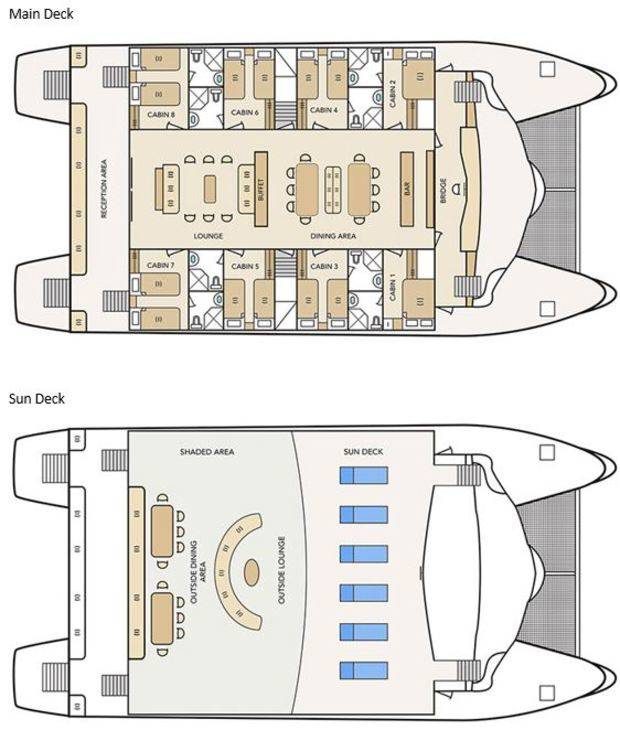
Specifications
- Year Of Construction: 2005
- Category: Tourist Superior
- Passengers: 16
- Cabins: 8
- Social Areas: Comfortable dining room, bar and lounge, library
- Length: 27m
- Beam: 11m
- Electric Power: 110v and 220v
- Machinery: 2 Cummins IMO 240 hp each one
- Speed (knots): 10 knots
- Crew: 9
- Naturalist Guide(s): 1
Whats included?
- On-board accommodation
- All meals, water coffee and tea during the voyage
- Transfers within Galapagos
- Bilingual naturalist guides
- Activities as specified
- Use of kayak and snorkelling equipment
What’s not included?
- International and internal airfares
- Arrival/departure taxes or reciprocity fees, visa fees where applicable
- Travel insurance
- Galapagos National Park fee US$100
- Transit control card US$20
- Gratuities
- Any items not mentioned as included

